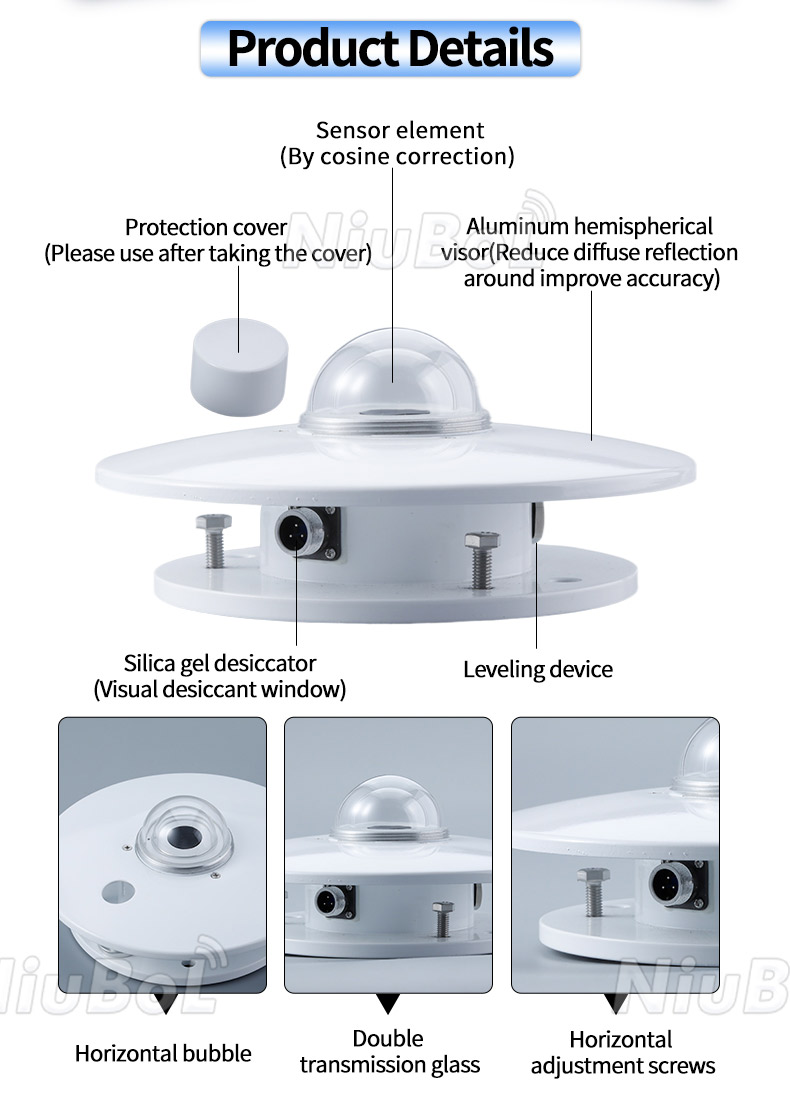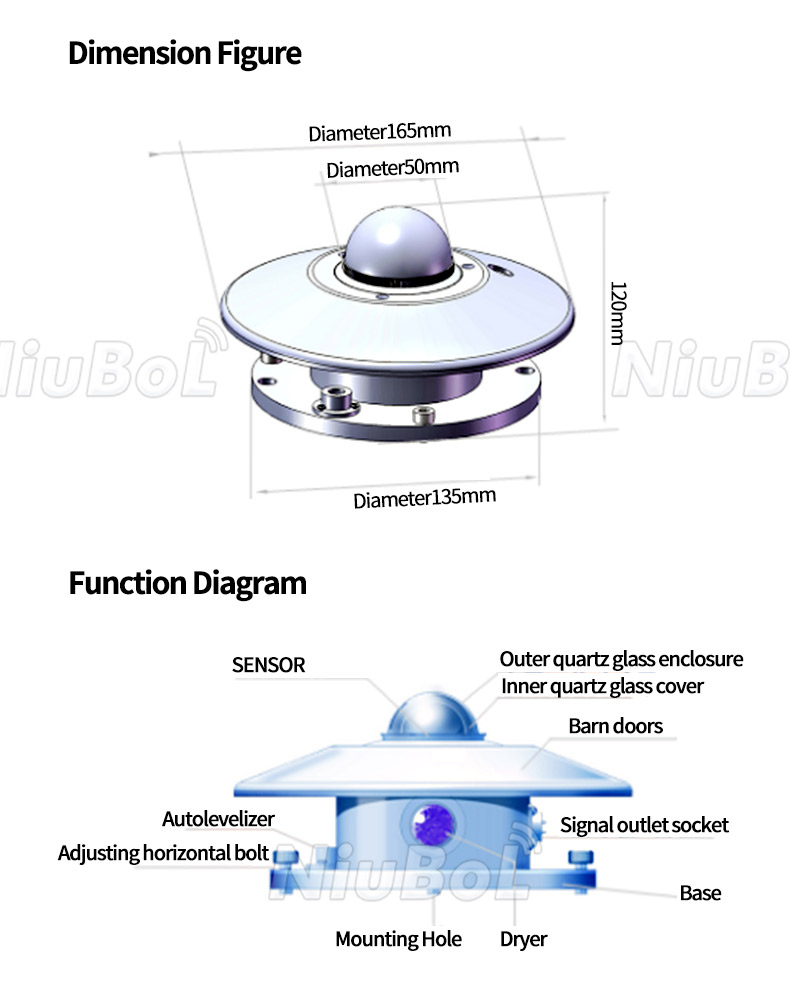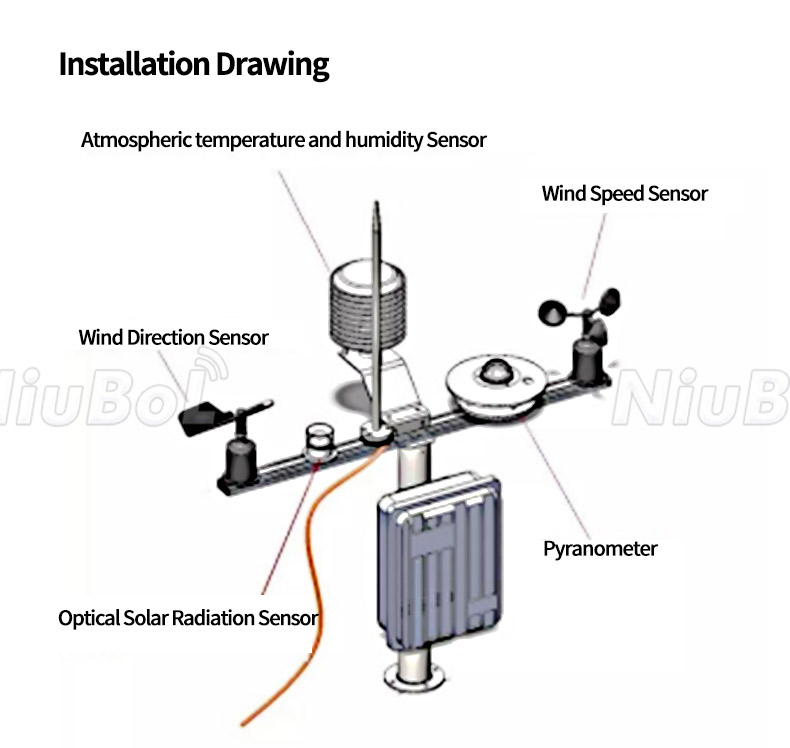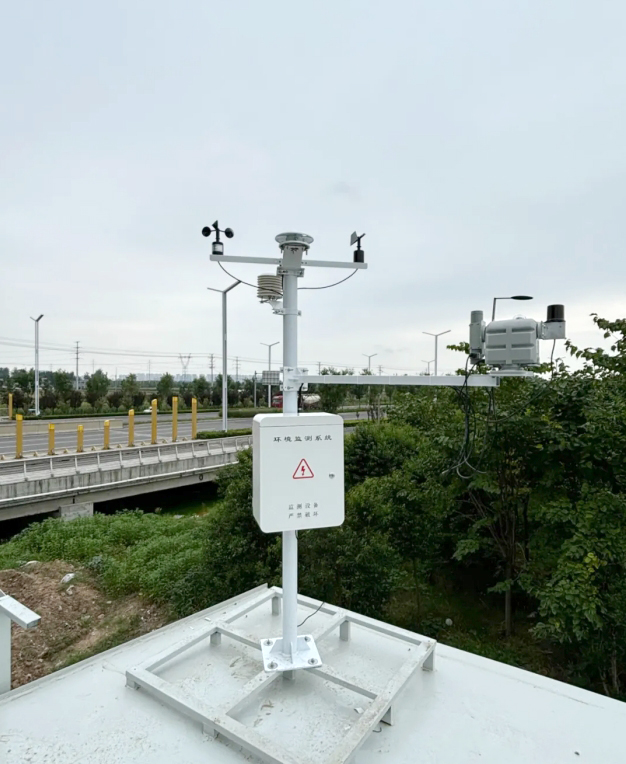

— Blogs —
—Products—
 Consumer hotline +8618073152920
Consumer hotline +8618073152920 WhatsApp:+8615367865107
Address:Room 102, District D, Houhu Industrial Park, Yuelu District, Changsha City, Hunan Province, China
Product knowledge
Time:2024-09-01 15:01:23 Popularity:2269
Pyranometers are mainly used to measure the total energy of solar radiation in all wavelength ranges, i.e. the sum of direct and scattered solar radiation. This instrument has a wide range of applications in meteorology, environmental science, agriculture, solar energy use and other fields.
The working principle of Pyranometer is based on the conversion between radiant energy and physical effects. Generally, it contains one or more light-sensitive elements that absorb solar radiation and convert it into measurable electrical or thermal signals. By measuring the strength of these signals, the Pyranometer can calculate the total energy of solar radiation.
Pyranometer is usually composed of light-sensitive devices, photoelectric converters, filters and other components. According to the different measurement principles and structures, Pyranometer can be divided into a variety of types, such as photoelectric total radiation sensor, thermal detector class irradiance meter. These different types of Pyranometers have their own characteristics in terms of measurement accuracy, response time and usage environment.

Measuring solar radiation using a solar pyranometer is a straightforward and relatively simple process. A solar pyranometer is an instrument specifically designed to measure the total solar radiation (i.e. the sum of direct and scattered radiation). The following are the basic steps in measuring solar radiation using a solar pyranometer:
1.1 Ensure that the selected solar pyranometer meets your measurement needs, including measurement range, accuracy and response time.
1.2 Check that the pyranometer has a calibration certificate to ensure the accuracy of the measurements.
1.3 A pyranometer usually consists of a thermopile sensor, which converts absorbed solar radiation into a small voltage. The sensor is protected by a glass dome which allows solar radiation to pass through while minimising the effects of wind and rain.
-The instrument can also include a sunshade ring to measure diffuse radiation when the direct beam is blocked.
Install the solar pyranometer in an open, unobstructed area to ensure complete solar radiation reception.
The mounting height should be moderate to avoid the influence of ground reflection on the measurement results.
Ensure that the pyranometer is mounted horizontally to minimise errors due to tilting.
Connect the solar pyranometer to a data logger or computer for recording and analysing data.
Make the necessary settings, such as setting measurement intervals, calibration parameters, etc., according to the instructions for the pyranometer and data logger.
Make sure that the data logger is well grounded to avoid electrical interference.

Start the measurement in clear weather conditions. Avoid taking measurements when there is thick cloud cover or drastic weather changes, as this may affect the accuracy of the measurement results.
Allow the pyranometer to warm up and stabilise for a period of time (the exact time will depend on the specifications of the pyranometer) to ensure the accuracy of the measurement results.
Record the measurement data, including the time stamp and the corresponding solar radiation value.
Process the collected data such as removing outliers, time averaging, etc.
Analyse the data for trends and characteristics of solar radiation.
Measurements can be compared with local meteorological data or historical data to assess the accuracy and reliability of the measurements.
The solar pyranometer should be cleaned and maintained regularly to ensure that its surface is free of obscuring materials such as dust and dirt.
Carry out periodic calibration as recommended by the manufacturer to ensure the accuracy of the measurement results.
Check the instrument for signs of physical damage or wear and replace damaged parts.
By following these steps, you can use the solar pyranometer to accurately measure solar radiation and provide valuable data to support meteorological research, solar energy utilisation and other fields.

Pyranometer has a wide range of applications in several fields:
1. Meteorological field: Pyranometer is one of the necessary measuring equipment in meteorological stations, which is used to measure total solar radiation, ground radiation and other meteorological parameters, providing data support for meteorological forecasting and weather research.
2. Agriculture: By measuring the total solar radiation received by crops, the Pyranometer can help farmers to make reasonable agricultural production plans to improve crop yield and quality.
3. Environmental monitoring: Pyranometer can be used to monitor the total solar radiation and the photochemical reaction of atmospheric pollutants in cities, industrial zones, mining areas and other areas, providing reference data for environmental monitoring and air pollution control.
4. Solar Energy Utilisation: In solar power generation systems, the Pyranometer is used to measure the level of solar radiation in order to assess the performance of solar panels and energy yield prediction.

Notes on using a pyranometer
1. During the measurement process, avoid touching the sensitive components of the solar pyranometer directly, so as not to damage or affect the measurement results.
2. In extreme weather conditions (e.g. strong winds, heavy rain, etc.), measurements should be suspended and the pyranometer properly protected.
3. Observe local safety regulations and operating procedures to ensure the safety and reliability of the measurement process.
4. When using the pyranometer for measurement, you need to choose a suitable installation location to ensure that you can receive the full solar radiation.
5. Regular cleaning and maintenance of the instrument is required to ensure the accuracy of the measurement results.
6. Depending on the measurement requirements and environmental conditions, the Pyranometer may also need to be calibrated and adjusted.

In summary, the Pyranometer plays a key role as an important measurement device in several fields. By accurately measuring the total energy of solar radiation, it provides powerful data support for meteorological forecasting, agricultural production, environmental monitoring and solar energy utilisation.
NBL-W-HPRS-Solar-Radiation-Sensor-Instruction-Manual-V3.0.pdf
Related recommendations
Sensors & Weather Stations Catalog
Agriculture Sensors and Weather Stations Catalog-NiuBoL.pdf
Weather Stations Catalog-NiuBoL.pdf
Related products
 Combined air temperature and relative humidity sensor
Combined air temperature and relative humidity sensor Soil Moisture Temperature sensor for irrigation
Soil Moisture Temperature sensor for irrigation Soil pH sensor RS485 soil Testing instrument soil ph meter for agriculture
Soil pH sensor RS485 soil Testing instrument soil ph meter for agriculture Wind Speed sensor Output Modbus/RS485/Analog/0-5V/4-20mA
Wind Speed sensor Output Modbus/RS485/Analog/0-5V/4-20mA Tipping bucket rain gauge for weather monitoring auto rainfall sensor RS485/Outdoor/stainless steel
Tipping bucket rain gauge for weather monitoring auto rainfall sensor RS485/Outdoor/stainless steel Pyranometer Solar Radiation Sensor 4-20mA/RS485
Pyranometer Solar Radiation Sensor 4-20mA/RS485
Screenshot, WhatsApp to identify the QR code
WhatsApp number:+8615367865107
(Click on WhatsApp to copy and add friends)
